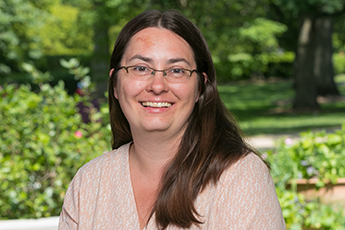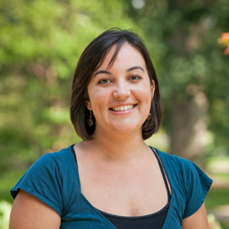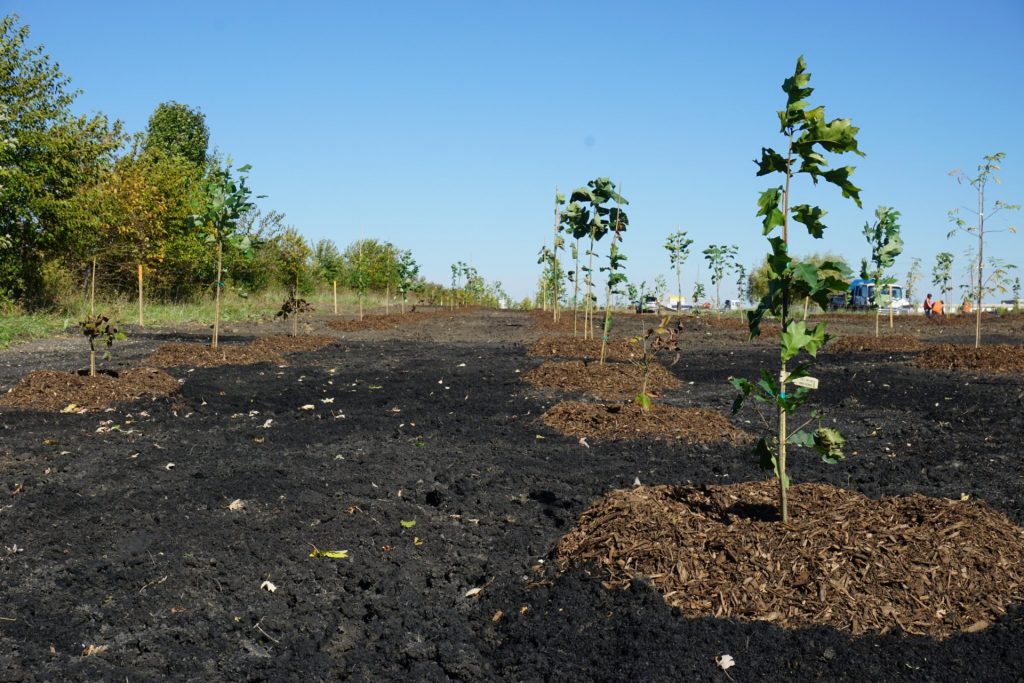Biochar Research at Morton Arboretum

Biochar– a substance made by burning organic waste like dead plants, leaves, and wood chips – appears to have promise as a climate change mitigating soil enhancer. In fact, its potential is being researched right now at Morton Arboretum by soil ecologist Dr. Meghan Midgley and research coordinator Michelle Catania. We spoke to Meghan and Michelle to discover how their research started and what they’ve learned so far.


What contributes to the increased recent interest in biochar?
MC: Urban soils are plagued with low quality characteristics like poor water-holding capacity and nutrient retention, poorly structured soil horizons, and tremendous variability in organic matter content. These attributes make for less-than-ideal conditions for long-lived urban trees. To overcome these environmental disparities, researching Indigenous communities’ solutions was a logical approach. As scientists were unearthing ancient archeological sites full of nutrient rich terra preta in the Amazonian basin they were discovering deep, well-structured black soils on sites that supported extensive rainforest agriculture for over one-thousand years — something that is atypical for tropical soils prone to slash-and-burn agriculture. This sparked a lot of global research interest in studying biochar’s impacts on soil remediation for our degraded urban and agricultural soils.
What research have you completed or are completing with biochar and soil?

MC: To test the effectiveness of biochar’s ability to improve soil quality for urban landscapes, PI Dr. Bryant Scharenbroch (Associate Professor at UWSP and Research Fellow at The Morton Arboretum) and I worked on several different projects together at the landscape, nursery, and greenhouse level. Initially, we set-up a greenhouse study to examine 7 treatments (wood chips, compost, biochar, biosolids, NPK fertilizer, aerated compost tea, water) on 2 common street trees (Acer saccharum Marsh. and Gleditsia triacanthos) grown in 3 soil types (sand, silt loam, compacted clay). We examined soil and tree responses to the treatments for 18 months and concluded the study with a destructive harvest of both above- and below-ground biomass. We learned that both biosolids and biochar improved soil microbial activity thus providing positive feedbacks to above- and below-ground tree growth, with the greatest biomass accumulation in both the biochar and biosolids treatments compared to the other treatment.
MC: To test biochar treatments on existing street trees, we set-up two landscape level studies in the Chicago region. One in a near-city center neighborhood of Chicago examining tree pits (in draft) and one in the southwest suburb of Bolingbrook examining parkway trees (in press). Both studies examined established street trees and a variety of incorporation mechanisms of different amendments to improve soil and tree health. We utilized a combination of vertical mulching (auguring holes in soil to add amendments below surface), air tillage (pneumatic incorporation of materials with little root damage), and “mulching in” methods, as well as combinations of materials and quick-release nutrient-rich amendments, such as compost, biosolids, and synthetic fertilizer.

MM: In the roadside project, we’re examining the effects of several amendments on the survival, growth, and health of six different tree species. The experiment includes a traditional compost as well as two biosolid amendment treatments and a biosolid-biochar mix. Two years after initiating the experiment, we found that the biosolid-biochar mix soils had the lower soil bulk density, higher organic matter and nutrient availability, and higher tree growth and chlorophyll content than soils and trees in the unamended control plots. But aside from bulk density, which was lower in the biosolid-biochar mix plots than the biosolid-alone plots, soil and tree responses were not markedly different between the biosolid-biochar mix plots than the biosolid-alone plots. In other words, soils and trees respond positively to biosolids, and it’s hard to say if biochar will enhance that effect. I’m looking forward to seeing what happens in subsequent years – perhaps the biochar will be more important over time if it facilitates this “slow-release fertilizer” effect on nutrient availability and maintains low bulk density due to its tendency to decompose slowly.
MC: We established a nursery experiment on the grounds of The Morton Arboretum to deepen our understanding about the different methods of incorporating biochar the varying combinations of organic amendments plus biochar with the goal of determining ideal application rates. The results from these controlled experiments in the nursery, coupled with landscape- and greenhouse-level responses will aid in our interpretation of the results for our region. As of now, it appears that biochar, whether alone or in combination with synthetic fertilizers, composts, or biosolids as a nutrient source, are good at ameliorating the effects of low quality, urban soils, evident by more biomass accumulation.
Are there additional benefits to biochar?

MM: In addition to potentially maintaining high nutrient availability and low bulk density over time, biochar may also decrease road salt effects on trees and soil. Biochar has high surface area, and sodium may sorb onto that surface instead of ending up in tree roots and in waterways. To test this, we added biochar as a top dressing or mixed biochar into soils, planted four different species of tree seedlings into pots, and watered the trees with or without added sodium chloride once a week. After 8 weeks, we found that when biochar was used as a top dressing, it decreased the amount of sodium that ended up in soil water and increased the growth of our fastest growing tree species, Northern Catalpa.
Do you have collaborators on your biochar research?
MM: These two projects have brought together teams at the Arboretum and beyond! The roadside project is a collaboration with the Illinois Tollway, and the biosolids we used are from the City of Chicago’s Municipal Waste Water District. Everyone is looking forward to the results of this study because it can help us design better roadside tree planting project in the future. The greenhouse project was led by a former high school student at the Illinois Math and Science Academy, and we’re still working together to analyze and publish his results.
MC: All of our biochar research has been done with generous support and collaboration from the Bartlett Tree Research Laboratories, as well as funding from Tree Research & Education Endowment (TREE) Fund and The Morton Arboretum’s Center for Tree Science.






Recent Comments